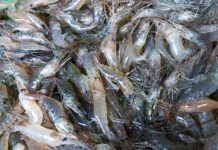Achieving healthy, lustrous hair is a universal desire. As the trend of natural skincare and haircare gains momentum, more individuals are seeking safe and effective at-home haircare solutions to maintain long-lasting beauty.
Beauty
Unveiling the Secrets Behind Korean Celebrities’ Ageless Complexion: U40 Stars Still Believably Portraying High School Students
Administrator - 0
As temperatures drop and humidity levels plummet, your skin becomes the first to bear the brunt, suffering from dryness, flakiness, dullness, and difficulty retaining makeup. Faced with these challenges, many are turning away from conventional moisturizers in favor of scientifically-backed solutions that nourish the skin from within. Among these, Dermall Matrix masks have swiftly risen to become a favorite in winter skincare routines.
Beauty
4 Essential Tips for Drinking Nut Milk to Achieve Glowing Skin and a Slimmer Figure
Administrator - 0
Not all nut milks live up to their advertised benefits, and their effectiveness largely depends on ingredients, processing methods, and timing of consumption.
Beauty
“Why Do Others Look Younger with a Bob Cut While You Look Older? The Secret to Harmonizing Your Facial Features”
Administrator - 0
With the same face, some people look stunning with bangs, enhancing their facial harmony, while others appear less flattering. The key reason lies in the forehead.
Beauty
“Linh Rin’s Secret: Transforming Discarded Ingredients into Beauty Treasures”
Administrator - 0
Instead of discarding it like most, Linh Rin preserves this ingredient, infusing it with honey to create a beverage that enhances both health and beauty.
Beauty
“25+ Stunning Wispy Bangs Hairstyles to Lead the 2026 Lunar New Year Trend & Easy At-Home Blow-Drying Tips”
Administrator - 0
Elevate your look with the effortlessly chic curtain bangs, a style that not only flawlessly conceals imperfections but also adds a youthful, airy vibe to your appearance. Dive into our curated collection of 25+ stunning curtain bang styles leading the 2026 trends, and master the salon-perfect finish at home using your hairdryer with our expert tips in the article below!
As the festive season unfolds, the air is filled with warmth, the sound of jingling bells, and melodies that captivate hearts. Let’s explore the timeless Christmas classics and the latest holiday hits that define this magical time of year!
How to
20+ Stunning Layered Hairstyles for Women: Trendy Looks to Rock in 2026 & Easy Styling Tips
Administrator - 0
Elevate your look with the latest trend in women's hairstyles: layered cuts. Expertly crafted with asymmetrical layering techniques, these styles add natural volume and effortlessly camouflage imperfections like round faces, high cheekbones, or broad foreheads. Discover the top 20+ stunning layered haircuts making waves in 2026, and learn how to achieve salon-quality care at home using your hairdryer. Transform your hair today!
How to
Top 50+ Must-Watch Christmas Movies of 2025: New, Heartwarming, and Meaningful Picks
Administrator - 0
As the crisp December breeze sets in, there’s nothing quite like cozying up under a warm blanket, sipping a steaming cup of hot cocoa, and indulging in the enchanting world of festive Christmas movies. Dive into our curated list of the best holiday films to make your season merry and bright.
How to
Zootopia 2 Movie Review: How to Enjoy Zootopia 1 in Stunning Quality from the Comfort of Your Home
Administrator - 0
Zootopia, known as *Zootropolis* in some regions, is a beloved animated film that captivates both children and adults alike. This introduction will delve into a review of *Zootopia 2* and suggest top-tier devices to elevate your at-home entertainment experience.
Most popular
- Advertisement -
Recent posts
Most popular
- Advertisement -
Recent posts
- Advertisement -








































